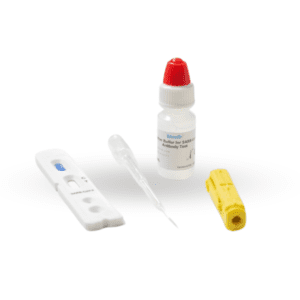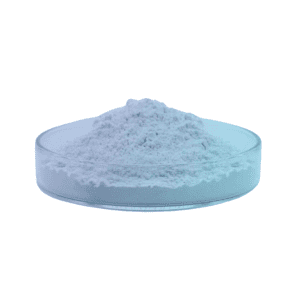Buffer Salts
Description
General Laboratory Chemicals – Buffer Salts: Essential for pH Stability in Laboratory Applications
Buffer salts are vital components in the preparation of buffer solutions, which are used to maintain a stable pH in laboratory settings. These salts are typically weak acids or bases combined with their conjugate salts, creating a system capable of resisting changes in pH when acids or bases are added. Buffer salts are indispensable in a wide variety of laboratory processes, including biochemical experiments, cell culture studies, and chemical synthesis.
The primary function of buffer salts is to maintain a consistent pH environment during experiments, ensuring that chemical reactions proceed under optimal conditions. Without these buffers, even small fluctuations in pH could lead to inaccurate results or failure of reactions. Buffer salts are commonly used in applications like enzyme reactions, titrations, protein studies, and DNA amplification, where precise pH control is essential.
In laboratories, buffer solutions are often prepared using a combination of buffer salts and water, sometimes with additional reagents to fine-tune the pH to the desired level. The effectiveness of a buffer solution depends on the concentration and type of buffer salts used, as well as the pH range in which the buffer is required to function.
Applications of Buffer Salts:
- Biochemistry and Molecular Biology: Buffer salts are crucial in enzyme assays, protein purification, and PCR (Polymerase Chain Reaction) where pH stability is required for the optimal activity of enzymes and biomolecules.
- Cell Culture: In cell biology, buffer salts are used in media to maintain pH and ensure the survival and growth of cells under controlled conditions.
- Chemical Synthesis and Reactions: In chemical synthesis, buffer salts help maintain a consistent pH for reactions that are sensitive to pH changes, ensuring efficient product formation.
- Titration and Analytical Chemistry: Buffer salts are widely used in titrations to maintain the pH and ensure accurate and precise measurements in acid-base reactions.
- Industrial Applications: In industrial chemical processes, buffer salts are used to stabilize pH levels, improving consistency and yield in product formation.
Comprehensive List of Products in the Buffer Salts Category:
1. Sodium Acetate (NaOAc):
- Applications: Used as a buffering agent in a variety of biochemical applications, including enzyme assays and PCR.
- Industries: Biochemistry, molecular biology, and diagnostics.
- Features: A weak base that helps maintain pH in the range of 4 to 6.
2. Potassium Phosphate (KH₂PO₄):
- Applications: Commonly used in buffer solutions for enzyme assays, microbiological media, and molecular biology applications.
- Industries: Biochemical research, microbiology, and pharmaceutical industries.
- Features: A versatile buffering agent that stabilizes pH in the range of 6 to 8.
3. Tris-HCl (Tris Hydrochloride):
- Applications: Widely used in molecular biology and biochemistry as a buffering agent for DNA/RNA manipulation and enzyme reactions.
- Industries: Molecular biology, biotechnology, and diagnostics.
- Features: A commonly used buffer for maintaining a pH between 7 and 9 in experiments.
4. Sodium Citrate (Na₃C₆H₅O₇):
- Applications: Used in the preparation of buffer solutions for biochemical applications, particularly in protein analysis and chromatography.
- Industries: Biochemistry, protein chemistry, and analytical chemistry.
- Features: A strong buffer capable of maintaining a stable pH range of 3 to 6.
5. Ammonium Acetate (NH₄C₂H₃O₂):
- Applications: Often used in chromatography and in the preparation of buffer solutions for protein purification and electrophoresis.
- Industries: Biochemistry, chromatography, and pharmaceutical research.
- Features: Used to maintain an acidic pH in buffer solutions, typically in the range of 3.5 to 5.
6. Potassium Chloride (KCl):
- Applications: Commonly used in the preparation of physiological saline solutions and as a buffering agent in biological research.
- Industries: Biological research, clinical diagnostics, and biotechnology.
- Features: Provides ions to maintain electrical balance and is often used in isotonic solutions.
7. Phosphate Buffered Saline (PBS):
- Applications: A widely used buffer solution in cell biology and molecular biology for cell culture, immunohistochemistry, and protein studies.
- Industries: Biotech, pharmaceuticals, and clinical laboratories.
- Features: Contains sodium chloride, sodium phosphate, and potassium phosphate to maintain pH and osmolarity.
8. Hepes (4-(2-Hydroxyethyl)-1-piperazineethanesulfonic acid):
- Applications: Used in cell culture and biochemical assays to maintain pH stability in a physiological range of 7.0 to 7.5.
- Industries: Cell biology, molecular biology, and biotechnology.
- Features: A zwitterionic buffer commonly used to stabilize pH in cell culture media.
9. MOPS (3-(N-Morpholino)propanesulfonic acid):
- Applications: Used in molecular biology for maintaining pH during the extraction and analysis of DNA and RNA.
- Industries: Molecular biology, biotechnology, and chemical research.
- Features: A highly effective buffer for stabilizing pH in the range of 6.5 to 7.9.
10. Sodium Bicarbonate (NaHCO₃):
- Applications: Often used in combination with other buffer salts to maintain pH in laboratory solutions, particularly in biological studies.
- Industries: Biochemistry, medical research, and industrial applications.
- Features: Maintains a basic pH range and is commonly used in cellular respiration experiments.
11. Citrate Buffer:
- Applications: Used in enzyme assays, protein chemistry, and in the preparation of certain chromatography buffers.
- Industries: Chemical synthesis, protein chemistry, and analytical chemistry.
- Features: Works well in the acidic to neutral pH range (pH 3 to 6), useful in controlling pH in biological systems.
12. Histidine Buffer:
- Applications: Used in biological research, particularly in protein purification and enzyme assays.
- Industries: Biochemistry, molecular biology, and protein research.
- Features: Works in the pH range of 5 to 7, ideal for maintaining stability in protein studies.
Conclusion:
Buffer salts are crucial for maintaining pH stability in various laboratory applications, from enzyme assays to cell culture studies and chemical syntheses. Whether it’s Tris-HCl, Potassium Phosphate, or Sodium Acetate, these chemicals play a vital role in ensuring consistent and accurate experimental results. They are indispensable in maintaining the pH environment required for the optimal performance of biological and chemical reactions.





